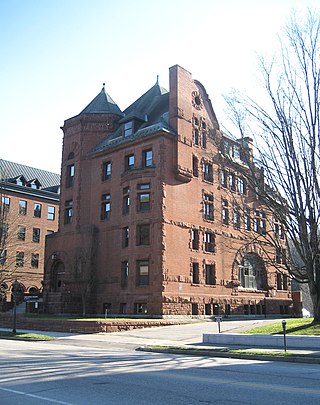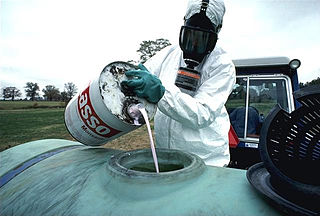Related Research Articles

The United States Department of Agriculture (USDA) is an executive department of the United States federal government that aims to meet the needs of commercial farming and livestock food production, promotes agricultural trade and production, works to assure food safety, protects natural resources, fosters rural communities and works to end hunger in the United States and internationally. It is headed by the secretary of agriculture, who reports directly to the president of the United States and is a member of the president's Cabinet. The current secretary is Tom Vilsack, who has served since February 24, 2021.

The Department for Environment, Food and Rural Affairs (Defra) is a department of His Majesty's Government in the United Kingdom responsible for environmental protection, food production and standards, agriculture, fisheries and rural communities in the entire United Kingdom. Concordats set out agreed frameworks for co operation, between it and the Scottish Government, Welsh Government and Northern Ireland Executive, which have devolved responsibilities for these matters in their respective nations.

The Michigan Department of Natural Resources (DNR) is the agency of the state of Michigan fo9unded in 1921, charged with maintaining natural resources such as state parks, state forests, and recreation areas. It is governed by a director appointed by the Governor and accepted by the Natural Resources Commission. Since 2023, the Director is Scott Bowen. The DNR has about 1,400 permanent employees, and over 1,600 seasonal employees.
The Michigan Department of Environment, Great Lakes, and Energy (EGLE), formerly Michigan Department of Environmental Quality, is a principal department of the U.S. state of Michigan for environmental issues. The department was created in 1995.

The Oregon Department of Agriculture (ODA) is responsible for agriculture in Oregon. This agency of the government of the U.S. state of Oregon promotes and regulates food production and safety. It is headed by the director of agriculture, appointed by the governor of Oregon, subject to confirmation by the senate, advised by a board of ten members, and gubernatorial appointees. Through its nine divisions, it administers no fewer than 36 chapters of Oregon laws.

The Vermont Agency of Agriculture Food and Markets (VAAFM) or sometimes colloquially the agriculture department, is a Vermont executive agency. Its purpose is to develop and execute policy on farming, agriculture, food, and promoting and protecting the Vermont brand as related to food in the worldwide market. It aims to meet the needs of dairy farmers, beekeepers, orchardists, maple sugarmakers, and related industries. The VAAFM promotes agricultural trade and production, work to assure food safety, protect natural resources, and preserve the culture of rural communities.
The Iowa Department of Natural Resources is a department/agency of the U.S. state of Iowa formed in 1986, charged with maintaining state parks and forests, protecting the environment of Iowa, and managing energy, fish, wildlife, land resources, and water resources of Iowa.

The California Department of Food and Agriculture (CDFA) is a cabinet-level agency in the government of California. Established in 1919 by the California State Legislature and signed into law by Governor William Stephens, the Department of Food and Agriculture is responsible for ensuring the state's food safety, the protection of the state's agriculture from invasive species, and promoting the California agricultural industry.
The Pest Management Regulatory Agency (PMRA) is the Canadian government agency responsible for the regulation of pest control products in Canada under the federal authority of the Pest Control Products Act and Regulations. The agency is a branch that reports to Parliament through Health Canada. The PMRA is responsible for providing access to pest management tools while minimizing the risks to human health and the environment by “using modern evidence-based scientific approaches to pesticide regulation, in an open and transparent manner”. Their main activity areas include: new product evaluation, post market review and compliance and enforcement.
The Texas Department of Agriculture (TDA) is a state agency within the state of Texas, which is responsible for matters pertaining to agriculture, rural community affairs, and related matters. It is currently headed by Agriculture Commissioner Sid Miller, a Republican, who was reelected to a 3rd term in 2022.

The Office of Environmental Health Hazard Assessment, commonly referred to as OEHHA, is a specialized department within the cabinet-level California Environmental Protection Agency (CalEPA) with responsibility for evaluating health risks from environmental chemical contaminants.
The use of pesticides in Canada is regulated by the Pest Management Regulatory Agency, a division of Health Canada via the Pest Control Products Act. Pesticides are used predominantly by the agricultural sector. In 2016, 20% of reported pesticide sales were non-agricultural sector products, and just under 5% were domestic sector products.

The Michigan Department of Licensing and Regulatory Affairs (LARA), originally the Department of Commerce among other names, is a principal department in the Michigan executive branch that oversees employment, professional licensing, construction, and commerce.

The California Department of Pesticide Regulation, also known as DPR or CDPR, is one of six boards and departments of the California Environmental Protection Agency (Cal/EPA).

Pesticide regulation in the United States is primarily a responsibility of the Environmental Protection Agency (EPA). In America, it was not till the 1950s that pesticides were regulated in terms of their safety. The Pesticides Control Amendment (PCA) of 1954 was the first time Congress passed guidance regarding the establishment of safe limits for pesticide residues on food. It authorized the Food and Drug Administration (FDA) to ban pesticides they determined to be unsafe if they were sprayed directly on food. The Food Additives Amendment, which included the Delaney Clause, prohibited the pesticide residues from any carcinogenic pesticides in processed food. In 1959, pesticides were required to be registered.

The New York State Department of Agriculture and Markets is the department of the New York state government that enforces laws relating to agriculture, weights and measures, and the production, processing, transportation, storage, marketing and distributing of food. It principally investigates animal and plant diseases, regulates food safety and labeling, promotes state agriculture, and administers the New York State Fair. Its regulations are compiled in title 1 of the New York Codes, Rules and Regulations.
The Australian Department of Agriculture, Water and the Environment (DAWE) was an Australian Government department which operated from 1 February 2020 until 30 June 2022. It represented Australia's national interests in agriculture, water and the environment.
References
- ↑ "State of Michigan Fiscal Year 2018-19 Appropriations Summary and Analysis" (PDF). michigan.gov website. State of Michigan. 2008-03-06. Retrieved 2017-02-05.
- ↑ "MDARD - Facts About Michigan Agriculture".
- ↑ Luke, Peter (30 November 2010). "Gov.-elect Snyder says environmental departments will focus on "quality of life"". MLive.com. Retrieved 30 November 2010.
- 1 2 "Governor Granholm Issues EO on Agriculture, DNR; Recommits to Gubernatorial Appointment of Directors". michigan.gov. December 1, 2009. Retrieved 2009-12-01.
- 1 2 "AP Interview: Ag director takes on rural mission in Michigan". Flint Journal. The Associated Press. February 12, 2011. Retrieved 12 May 2011.
- ↑ "MDARD Divisions" (PDF). michigan.gov website. State of Michigan. June 2011. Retrieved 2011-06-08.
- ↑ "MDARD - View a list of MDARD directors both past and present".
- 1 2 "Horse racing industry undergoes changes, Sports Creek Raceway attendance declines". Swartz Creek News. Booth Newspapers. 2009-10-16. Retrieved 2009-10-21.